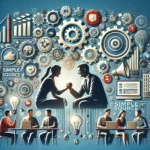Dutch, the official language of the Netherlands and one of the official languages of Belgium and Suriname, is spoken by over 23 million people worldwide. Dutch translation services are crucial for effective communication in business, legal, medical, and cultural contexts. This comprehensive guide explores the importance, types, challenges, and future trends of Dutch translation services.
The Importance of Dutch Translation Services
Facilitating International Business
The Netherlands is known for its strong economy and as a hub for international trade. Accurate translation of business documents, contracts, marketing materials, and websites is essential for companies looking to enter or operate in Dutch-speaking markets. Effective communication fosters trust, ensures smooth transactions, and promotes successful partnerships.
Promoting Cultural Exchange
Dutch culture, including its rich literary tradition, art, and history, has made significant contributions to global heritage. Translating Dutch cultural content into various languages allows a broader audience to appreciate and understand these contributions. This cultural exchange fosters mutual understanding and enriches global culture.
Supporting Legal and Medical Communications
Precision is critical in legal and medical fields. Translating legal documents such as contracts, patents, and court proceedings ensures compliance with Dutch laws and regulations. Similarly, medical translations, including patient records, prescriptions, and research papers, are vital for effective healthcare delivery and international medical collaboration.
Enhancing Tourism
The Netherlands is a popular tourist destination known for its historic cities, tulip fields, windmills, and museums. Dutch translation services are vital for the tourism industry, ensuring that tourists can access information in their native languages. This includes translating travel guides, websites, menus, and signage, enhancing the overall visitor experience.
Types of Dutch Translation Services
Document Translation
Document translation involves converting written content from Dutch to other languages and vice versa. This includes business reports, academic papers, technical manuals, and personal documents. High accuracy and attention to detail are crucial to ensure the translated document maintains the same meaning and tone as the original.
Website Translation and Localization
Website translation involves adapting online content to suit the cultural and linguistic nuances of the Dutch audience. Localization may include changing images, colors, and even website layout to ensure the site is user-friendly and culturally relevant. This helps businesses effectively engage with Dutch users and enhance their online presence.
Interpretation Services
Interpretation involves translating spoken language in real-time. There are two main types of interpretation: simultaneous and consecutive. Simultaneous interpretation, often used in conferences, involves translating the speaker’s words in real-time. Consecutive interpretation involves the interpreter waiting for the speaker to finish a sentence or thought before translating it. Both types require a high level of skill and fluency in both languages.
Multimedia Translation
Multimedia translation includes translating audio and video content, such as films, TV shows, advertisements, and corporate training videos. This can involve dubbing, subtitling, or voice-over services. The goal is to make the content accessible and engaging for Dutch-speaking audiences while preserving the original message and tone.
Certified Translation
Certified translation is required for official documents that need to be submitted to governmental or legal authorities. These documents can include birth certificates, Chinese Translation Services, marriage licenses, academic transcripts, and immigration papers. Certified translations are accompanied by a statement of accuracy from the translator or translation agency, ensuring the translation is recognized as a true and accurate representation of the original.
Challenges in Dutch Translation Services
Complex Linguistic Structure
Dutch has a unique linguistic structure, including a rich set of idiomatic expressions and a complex system of verb conjugations. Translators must have a deep understanding of these nuances to ensure accurate translations that convey the correct meaning.
Cultural Nuances
Dutch culture has its own set of idioms, expressions, and cultural references. Translators need a deep understanding of these cultural elements to accurately convey the intended meaning in the target language. This requires not only linguistic skills but also cultural sensitivity and awareness.
Handling Technical Terminology
Translating technical documents, such as legal contracts or medical records, requires specialized knowledge. Translators must be familiar with industry-specific jargon and conventions to ensure precise and accurate translations. This often necessitates additional research and consultation with experts in the field.
Maintaining Tone and Style
Each type of document has its own tone and style that must be preserved in the translation. For instance, legal documents require a formal and precise tone, whereas marketing materials may have a more conversational and persuasive style. Translators must be skilled in adapting their writing to match the tone and style of the original content.
The Role of Technology in Dutch Translation Services
Computer-Assisted Translation (CAT) Tools
CAT tools are software applications that assist human translators by providing suggestions and automating repetitive tasks. These tools store previously translated phrases and sentences, allowing for greater consistency and efficiency. They are particularly useful for managing large translation projects and ensuring uniformity across different documents.
Translation Memory
Translation memory is a database that stores previously translated content. When a similar or identical phrase appears in a new text, the translation memory suggests the previous translation, saving time and ensuring consistency. This is especially useful for translating large volumes of text with repetitive content, such as technical manuals or user guides.
Terminology Management
Terminology management tools help translators maintain consistency in the use of technical terms and jargon. These tools store glossaries and termbases, ensuring that specific terms are translated consistently across different documents. This is particularly important in fields such as medicine, law, and engineering, where precise terminology is crucial.
Machine Translation and Post-Editing
While machine translation has advanced significantly, it is still not perfect. It can produce rough drafts that human translators can then edit for accuracy and fluency. This process, known as post-editing, combines the speed of machine translation with the accuracy of human translation. It is particularly useful for large-scale projects with tight deadlines.
Future Trends in Dutch Translation Services
Advances in Artificial Intelligence
Artificial intelligence (AI) is expected to play an increasingly important role in translation services. AI-powered translation tools are becoming more sophisticated, capable of understanding context and producing more accurate translations. However, human translators will still be needed to handle complex and nuanced texts, ensuring that cultural and contextual subtleties are preserved.
Growing Demand for Multilingual Content
With the rise of the internet and social media, there is an increasing demand for multilingual content. Businesses and individuals are looking to reach a global audience, driving the need for more translation services. This trend is likely to continue as the world becomes more interconnected and culturally diverse.
Integration with Other Technologies
Translation services are being integrated with other technologies, such as virtual reality and augmented reality. This can provide immersive experiences for users, such as virtual tours with real-time translation. Additionally, voice recognition and speech-to-text technologies are being used to improve interpretation services, making them more accessible and user-friendly.
Emphasis on Quality and Customization
As the translation industry grows, there will be a greater emphasis on quality and customization. Clients are looking for translations that are not only accurate but also tailored to their specific needs. This will require translators to specialize in particular fields and develop a deep understanding of the cultural context of the target audience.
Dutch translation services are essential for effective communication in a globalized world. They enable businesses to expand into Dutch-speaking markets, promote cultural exchange, support legal and medical communications, and enhance tourism. While there are challenges in maintaining accuracy and handling cultural nuances, advancements in technology are making translation more efficient and accurate. As the demand for multilingual content continues to grow, the Dutch translation industry will evolve to meet the needs of an interconnected world, ensuring that language barriers are no longer a hindrance to global communication and understanding.





